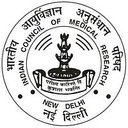Observations on anopheline breeding in relation to aquatic plants in different breeding habitats of Kheda (Gujarat).
Słowa kluczowe
Abstrakcyjny
Water bodies infested with aquatic vegetations may pose problems in mosquito control through bio-environmental methods. Paucity of information pertaining to association of mosquito breeding with aquatic vegetation was the basis for present investigation. The mosquito breeding sites infested with solitary/dominating plant community viz., Eichhornia crassipes, Ipomoea aquatica, Hydrilla verticillata, Nymphea neuchali, Trapa bispinosa, Lemna paucicostata, Trachelomonas spp., Azolla pinnata, Algae spp. and Cynodon dactylon were selected for the study. The investigation revealed that breeding of eleven anopheline species was associated with Eichhornia in different habitats followed by Hydrilla, algae and Cynodon (8 each), Ipomoea and Trapa (6), Lemna. and Nymphea (5), Azolla and Trachelomonas (4). An. subpictus was associated with all types of vegetation. An. annularis, An. nigerrimus and An. barbirostris were associated with nine plant species. An. culicifacies, the principal malaria vector was found breeding in association with seven aquatic plants and showed strong association with Cynodon, Hydrilla and algae. The species diversity in habitats infested with Hydrilla, algae and Cynodon seems to be most favourable for the breeding of An. culicifacies. It is suggested that thinning or removal of such vegetations at regular interval may help to reduce vector population and enhance the efficacy of biological control agents particularly the larvivorous fishes in such habitats.


